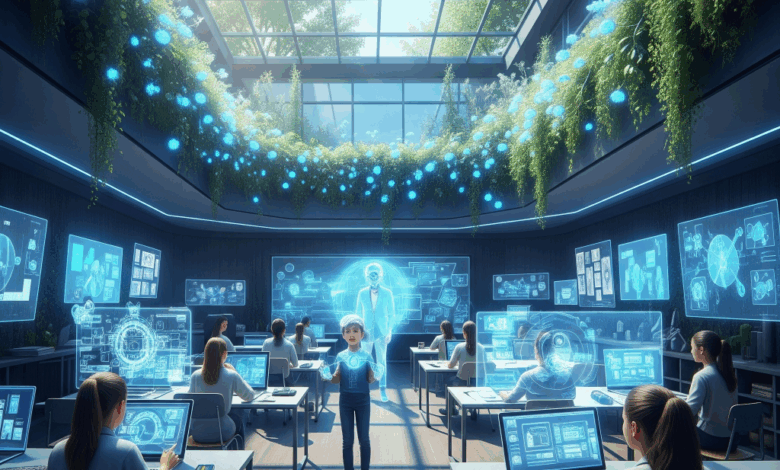Reimagining Education: Navigating the Challenges of 21st-Century Learning

Reimagining Education: In today’s educational system, traditional teaching presents several serious issues for educators, especially in America. These challenges include standardized curriculums that don’t cater to individual needs, inequality in access to quality education, and over memorization over critical thinking, problems which collectively impact educators’ ability to close the achievement gap and ensure quality education for all students.
This article examines potential solutions to address these issues, focusing particularly on 21st Century models designed to reimagine and transform traditional learning.
Having been an educator for nearly 30 years, I am well- aware of the challenges we teachers are confronted with daily. Clinging to outdated learning models can be both psychological and physically draining and lead to burnout. Many of my colleagues have already left the profession for less exhausting careers.
The reason I am staying is because I have hope in the concept of reimagining education. But what does it mean? It simply means transcending old, outdated leaning models in the American education system to address the diverse needs of 21st century learners.

What are some of these needs? They consist of:
- Equity and Access to a quality education
- Competency in technology and innovation
- A mindset toward lifelong learning
- A plan for personalized education
- A collaborative understanding of teacher, student, and parental roles
Imagine the impact if these needs were satisfied. It would bring a dynamic transformation to the American education system, creating a sense of academic progressiveness and achievement, thereby closing the achievement gap.
How Reimagining Education Works: Strategies for Conquering problems associated with 21st century learning.
Remember this approach transforms traditional models of rote memorization into models that engage students on a dynamic and interactive level. That said. A few of the most effective learning models include:
Project-based learning
PBL can be defined as a teaching approach where students work on long-term projects that involve solving real-word problems. For example, students may be assigned to conduct experiments, build various models, or develop a community plan.
Students learn significantly with the PBL model. For example, they come to understand that by working together they can get things done more efficiently and effectively. They learn how to engage in critical thinking to resolve problems through experience, not through rote memorization.
Moreover, students get to create a special bond by accomplishing something together. This is exactly what it is like collaborating with other people in real-world situations.
Several schools have been successful by replacing the PBL model. According to National Public Radio (NPR), Danville Schools in Kentucky implemented project-based learning and established the “Danville Diploma,” emphasizing social-emotional skills, ethics, and career readiness. Recognized as an “exemplar school” by the Partnership for 21st Century Skills, Danville’s approach focuses on authentic learning experiences over traditional testing.
Implementing project learning is a revolutionary approach to reimaging education across America.
Collaborative Learning
The CL approach can be defined as group-based learning where students work together to solve problems. Unlike the PBL model, CL is not a long-term project. You can implement it in your classroom anytime and as many times a week as possible. For example, you can assign projects that require students together to plan, research, and present a topic.
Students can also put their skills and creativity together to draft a story, report, and other text that is relevant to the main theme.
In my classroom, collaborative learning is the order of the day. I usually have students engage in math, literacy, and science projects throughout the week. This helps them build skills in working together to solve problems as it is in the real world.
Reimaging Education through Gamification
If you’ve ever struggled with students who looked bored and unengaged? You are not alone. Most teachers have had these challenging moments. However, that is where gamification becomes a game changer for teachers who integrate it into their lesson presentations.
Gamification means integrating game mechanics and elements into learning to make education more engaging and fun not only for students, but for teachers as well. The days of lecture-oriented presentations are boring and outdated.
Students desire to be inspired by what they have learned. When using this approach, teachers can reward students with points, badges, and other reasonable incentives. Competition in learning STEAM subjects can transform boring classrooms into exciting and anticipatory learning environments.
Peer Teaching and Peer Tutoring
Imagine a classroom in which students teach themselves from the opening bell to the exit bell. During my years as a substitute teacher, I have worked in a few classes that were close to fulfilling such spectacular vision.
Allowing students to teach each other goes a long way in reinforcing their own learning and helping others. This approach can involve partner work, peer review sessions as well as teaching groups. Studies show that many students may learn better from their peers than from classroom teachers.
As a teacher, I often allow students to work in partners, conduct skills tests among each other, and grade each other papers.
Competency-Based Learning
Competency-Based Learning, another way of reimagining education, challenges students to progressively master specific learning objectives rather than time spent in class. Progress is measured via mastery tests, self-paced learning, and individualized learning tracks.
Consider Lindsey Unified School District in California. Since turning away from traditional learning, the school has seen significant improvement in students’ outcomes, including increased graduation rates and college readiness.
LUSD focused on personalized learning pathways and flexible pacing. The objective was to prepare students for college and successful careers.
Culturally Responsive Teaching
American classrooms across the country are saturated with diversity. There is no ignoring it. Educators must acknowledge it and incorporate students’ cultural backgrounds into the learning process. Districts must consider designing a diverse curriculum, inclusive materials, and cultural celebration in terms of holidays, if possible.
For example, Black History mother, Hispanic and Hmong heritage months should be recognized and celebrated in the classroom to a greater or lesser degree during special days.
Activities include stories, videos, and other relevant resources should be considered when recognizing diverse cultures.
Conclusion
So, what are your thoughts on Reimaging education? How will you apply these insights into your classroom? I encourage you to share your experiences and questions in the comments below.
Ultimately, the most important takeaway is providing a quality education for all students, which involves closing the achievement gap. By embracing the above strategies and many more not mentioned in this article, teachers can transform classrooms across the nation. Remember to reimagine old, outdated approaches and continue your journey helping to craft the lives of the next generation of creators, entrepreneurs, and leaders.





